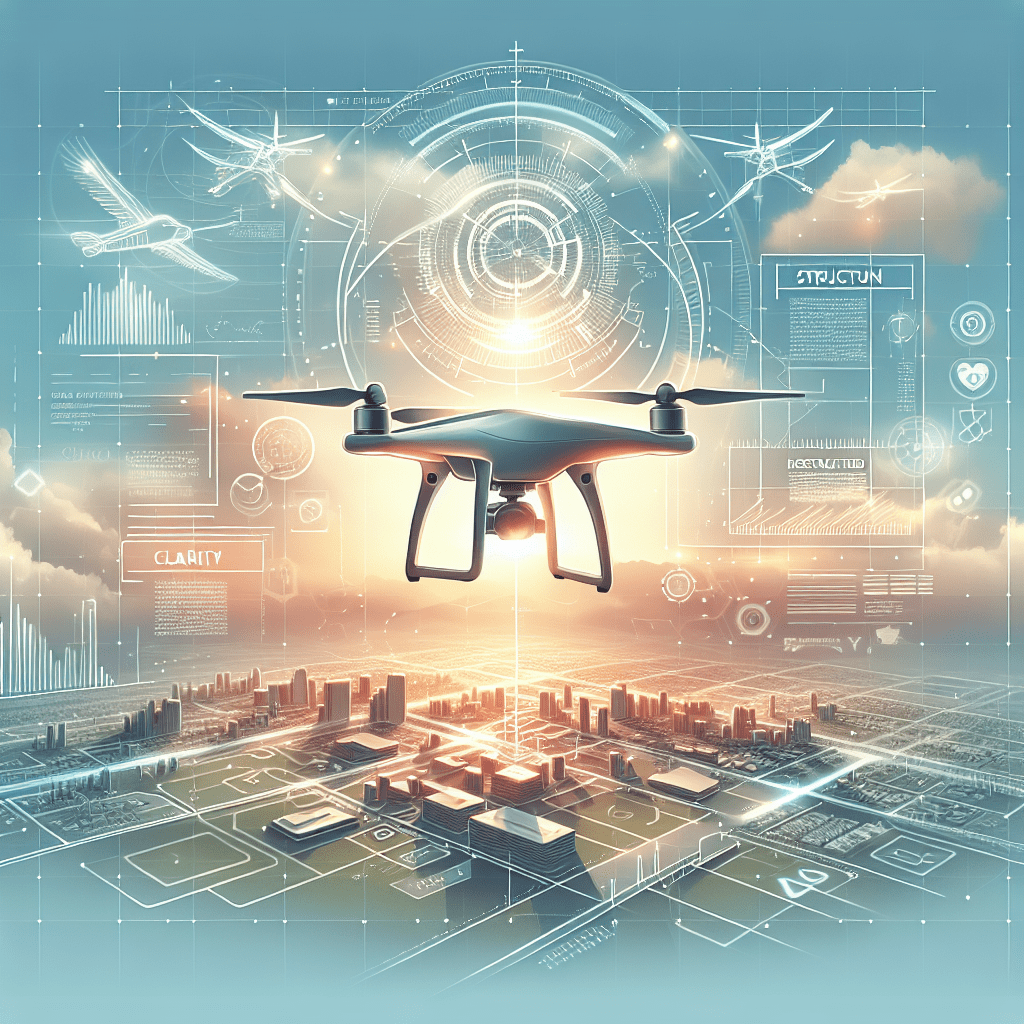Drone Safety: 5 Benefits of Smart Route Planning
In This Article
- Intelligent route planning significantly reduces mid-air collision risk.
- Real-time mapping and geofencing prevent accidental no-fly zone breaches.
- Optimised routes increase energy efficiency and mission success rates.
- Dynamic rerouting ensures continued safety during environmental changes.
- Built-in regulation checks facilitate airspace law compliance.
Introduction: Why Route Planning Matters
Understanding the Key Safety Challenges
Drone Safety is no longer an afterthought. With the exponential increase in unmanned aerial vehicles (UAVs) taking to the skies, safely navigating the airspace has become increasingly complex. Whether used for commercial deliveries, aerial photography, or infrastructure inspections, drones encounter numerous hazards – from no-fly zones to unpredictable weather conditions. The significance of intelligent route planning cannot be overstated. It plays a vital role in enhancing operational safety, protecting the public, and preserving equipment. With safety incidents on the rise due to overcrowded skies, ensuring drones are guided by sophisticated, computationally derived paths is now a critical necessity.

1. Mitigating Mid-Air Collisions
Using AI to Predict and Avoid Obstacles
One of the foremost applications of intelligent route planning is the mitigation of mid-air collisions. Routes generated by traditional, manual input often fail to account for fast-moving environmental variables or localised air traffic flows. However, incorporating artificial intelligence (AI) and machine learning into flight path calculations results in dynamic route generation that actively avoids potential threats.
Intelligent route planning systems utilise real-time telemetry, weather data, and other drone position information to assess safe corridors for operation. By doing so, drones can adapt flight paths in response to detected objects – such as birds, other UAVs, or unexpected construction – reducing the likelihood of dangerous air intersections. Moreover, AI can assign weighted risk values to various route segments, critically enhancing Drone Safety by eliminating high-risk routes preemptively.
“The successful use of intelligent navigation reduced near-miss incidents by over 40% in our commercial drone fleet within six months.” – UK Logistics Tech Director
2. Preventing No-Fly Zone Violations
Drones often operate close to densely populated urban areas, airports, or privately restricted zones. These regions typically have strict no-fly or restricted-entry rules imposed by aviation authorities. Failing to comply can lead to hefty penalties or even legal prosecution. Intelligent route planning platforms integrate real-time maps with aviation geofencing data, ensuring drones avoid restricted zones by default.
For example, updated NOTAMs (Notices to Airmen) and airspace restrictions are factored into the route computation before takeoff. This allows drone operators to maintain high situational awareness effortlessly. Significantly, some advanced planners even send live alerts to operators when a planned path intersects an active no-fly area, prompting recalculations or manual override decisions. Therefore, Drone Safety is intrinsically linked to no-fly zone avoidance, made vastly more effective through intelligent automation and integration with aviation databases. Learn more about Drone Navigation and Safety
3. Enhancing Efficiency Through Optimised Flight Paths
Safety and efficiency often go hand-in-hand. A haphazardly planned path may appear safe on the surface, but inefficient flight patterns can increase airborne duration, deplete battery reserves prematurely, and introduce unnecessary exposure to risk. Intelligent route planning algorithms not only prioritise safety but also optimise routes for energy usage, weather conditions, and time constraints.
These systems use topographical map overlays, predictive modelling, and goal-oriented computation to create the most efficient path between two points. The net result is decreased mission times, prolonged battery life, and minimal operational wear – all critical to maintaining consistent Drone Safety standards. Efficiency is not just cost-effective; it ensures that drones have enough power reserves to return home safely in the event of an emergency or diversion. Research on future directions in drone path planning
4. Real-Time Data and Dynamic Rerouting
What happens when a planned path becomes hazardous halfway through a mission? Traditional flight plans falter in such scenarios. Intelligent route planning platforms proactively manage these situations through real-time monitoring and dynamic rerouting capabilities. These platforms constantly ingest sensor datasets and environmental readings to forecast anomalies like sudden storms, magnetic interference, or mechanical anomalies.
Incorporating such intelligence into the route planning process empowers drones to autonomously reroute midflight without awaiting human intervention. Dynamic rerouting ensures that drones do not proceed into danger blindly, thereby maintaining continual safety throughout the mission. Moreover, integration with cloud-based analytics allows for early predictions of route disruption, thereby offering rerouting as a preventive, not reactive, measure. This real-time flexibility greatly enhances Drone Safety, especially in fast-changing urban air environments.
5. Compliance with Airspace Regulations
Operating in UK airspace involves negotiating a countryside of complex laws and regional aviation protocols. Regulatory bodies like the Civil Aviation Authority (CAA) mandate strict adherence to registration, altitude limits, pilot certifications, and designated airspace usage. Intelligent route planning tools are now built with embedded regulation libraries ensuring automatic compliance.
Before a flight begins, these tools cross-reference the intended flight path against the applicable regulations – including temporary flight restrictions, altitude ceilings, and operational zones. By integrating official datasets and obtaining pre-clearance through APIs, drones autonomously check for compliance. This means that commercial operators, hobbyists, and emergency response units can prioritise Drone Safety without battling convoluted rulebooks. Read a related article
Tools Enabling Intelligent Route Planning
A growing suite of advanced tools supports smarter drone navigation. Platforms such as DJI Terra, UgCS, DroneDeploy, and AirMap provide powerful interfaces capable of overlaying weather, topography, and air-traffic patterns in real-time. These tools are critical for automating drone route planning while maintaining up-to-date software integrations with airspace data providers.
Moreover, many platforms offer modular plugins for AI-assisted mission planning, collision prediction, and automatic compliance checks. By combining satellite data, crowdsourced air-traffic feeds, and dynamic geofencing, these technologies give drone operators unprecedented confidence. Whether flying in urban canyons or remote agricultural zones, intelligent tools provide granular control and instant feedback – making Drone Safety a function of good software as well as good piloting.
Common Mistakes in Flight Path Design
Despite the available tools and data, operators often make avoidable mistakes when designing drone flight paths. One common pitfall is relying on outdated maps or static pre-flight assessments without validating them against current conditions. Another is the failure to consider elevation changes or terrain features that may interfere with line-of-sight communication or navigation sensors.
It’s also common to overlook battery limitations when calculating round-trip time, which can result in emergency landings. Overcomplicating routes to achieve artistic footage, for example, frequently introduces unnecessary risk. Intelligent flight planning tools mitigate many of these hazards by offering simulations, route scoring, and predictive analytics. Understanding these common mistakes and introducing preventative digital workflows is a cornerstone of secure, long-term Drone Safety strategy.
User Stories: Real Benefits of Route Planning
Case studies across sectors underscore the benefits of intelligent route planning. In East London, a real estate firm employing drones for property inspection reduced operational mishaps by 60% after implementing dynamic route planning software. They credited the success to automated geofence alerts and AI-based trajectory mapping that adapted in real time to pedestrian traffic and construction activity.
Similarly, in Cumbria, an agricultural cooperative mapped its 5,000-acre farmland using intelligent pathing software and achieved a 30% time reduction without compromising data quality. The reduced airborne time also meant fewer battery swaps and less accidental drift into private airspace. These examples reinforce how intelligent planning transforms not only operational performance but also overall Drone Safety metrics across industries.
Conclusion: Fly Smarter, Not Riskier
[CONCLUSION_CONTENT]
Great guide on 5-ways-intelligent-route-planning-improves-drone-safety – Community Feedback

